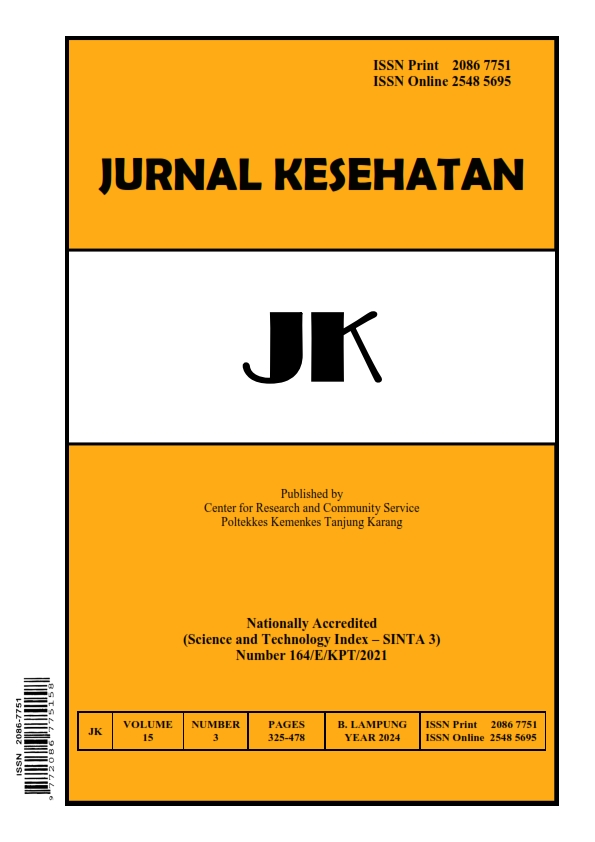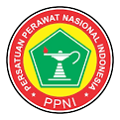Prioritization of Problems in Public Health Programme Planning Using The Difficulty Usefulness Method: Scoping Review
DOI:
https://doi.org/10.26630/jk.v15i3.4738Keywords:
Community Health Center, E-Learning, Focus Group DiscussionAbstract
The difficulty-usefulness method is not widely known as a prioritization method. Some researchers have used this method in prioritization, but no researcher has reviewed the difficulty-usefulness method, the elements used, or the development of this method. This scoping review examines the difficulty-usefulness method in priority setting, the elements used, and the development of this method. This scoping review follows the five-stage framework of Arksey and O'Malley. A database search used keywords for literature published between January 2014 and June 2024. Data were organized, summarized, and presented in tables based on various themes. Eight studies were reviewed that utilized the difficulty-usefulness method in improving e-learning activities, preventing pesticide usage risks, selecting contraceptive methods, determining healthy family indicators, and determining community-based disaster preparedness parameters. The elements used in priority setting were aligned with the activities or issues to be improved or enhanced. These elements were determined through focus group discussions (FGD) and previous research results. The development of the difficulty-usefulness method has been carried out by several researchers, including the arrangement of elements in a pyramid structure, weighting attributes, and grouping elements into quadrants. The effectiveness of the difficulty-usefulness method has not yet been assessed, and there is still significant potential for further development.
References
Al Hikami, M. U. A., Marianah, M., & Haksama, S. (2022). Analisis Penerapan Manajemen di Puskesmas Pacet Berdasarkan PMK No. 44 Tahun 2016 Tentang Pedoman Manajemen Puskesmas. Jurnal Manajemen Kesehatan Indonesia, 10(1), 7–19. https://doi.org/10.14710/jmki.10.1.2022.7-19
Angelis, A., Kanavos, P., & Montibeller, G. (2017). Resource Allocation and Priority Setting in Health Care: A Multi-criteria Decision Analysis Problem of Value? Global Policy, 8, 76–83. https://doi.org/10.1111/1758-5899.12387
Bakri, H. (2018). The planning of community health center in Indonesia. European Journal of Research and Reflection in Management Sciences, 6(3), 12–18.
Baltussen, R., Jansen, M. P., Mikkelsen, E., Tromp, N., Hontelez, J., Bijlmakers, L., & Van der Wilt, G. J. (2016). Priority setting for universal health coverage: We need evidence-informed deliberative processes, not just more evidence on cost-effectiveness. International Journal of Health Policy and Management, 5(11), 615–618. https://doi.org/10.15171/ijhpm.2016.83
Dudley, L., Mamdoo, P., Naidoo, S., & Muzigaba, M. (2022). Towards a harmonised framework for developing quality of care indicators for global Health: A scoping review of existing conceptual and methodological practices. BMJ Health and Care Informatics, 29(1), 1–9. https://doi.org/10.1136/bmjhci-2021-100469
Hardjito, K., Rahmaningtyas, I., & Nugroho, H. S. W. (2023). Selection of Prioritized Healthy Family Indicators, Using the Difficulty-Usefulness Pyramid (DUP). Rawal Medical Journal, 48(1), 168–172. https://doi.org/10.5455/rmj20221121013304
Ibrahim, I., Sudiana, I. K., Mukono, H. J., Suhartono, & Nugroho, H. S. W. (2020a). Awareness program of pesticides used among farmers using difficulty-usefulness pyramid (A suggestion for health laws and policies regarding the use of pesticides). Indian Journal of Forensic Medicine and Toxicology, 14(3), 1910–1915. https://doi.org/10.37506/ijfmt.v14i3.10705
Ibrahim, I., Sudiana, I. K., Mukono, H. J., Suhartono, & Nugroho, H. S. W. (2020b). Determination of priority elements of vigilance in the use of pesticides based on difficulty and usefulness (A supporting study for law and policy in Health). Indian Journal of Forensic Medicine and Toxicology, 14(2), 1615–1619. https://doi.org/10.37506/ijfmt.v14i2.3156
Ika, R., Puspitasari, S., Mercado, M. A., Santoso, H., Nugroho, W., Hendriana, A., & Ca, N. (2022). Difficulty-Usefulness Pyramid ( DUP ) as a Method of Selecting Priority Elements in the Use of Long-Term Contraceptive Methods 168 | Publisher : Humanistic Network for Science and Technology Health Notions. Health Notions, 6(4), 168–174.
Kaur, G., Prinja, S., Lakshmi, P. V. M., Downey, L., Sharma, D., & Teerawattananon, Y. (2019). Criteria Used for Priority-Setting for Public Health Resource Allocation in Low- and Middle-Income Countries: A Systematic Review. International Journal of Technology Assessment in Health Care, 35(6), 474–483. https://doi.org/10.1017/S0266462319000473
Ministry of Health Republic Indonesia. (2019). Peraturan Menteri Kesehatan RI No 43 tahun 2019 tentang Puskesmas. Jakarta.
Ministry of Health Republic Indonesia. (2022). Peraturan Menteri Kesehatan Republik Indonesia Nomor 13 Tahun 2022 Tentang Perubahan Atas Peraturan Menteri Kesehatan Nomor 21 Tahun 2020 Tentang Rencana Strategis Kementerian Kesehatan Tahun 2020-2024. Jakarta.
Munn, Z., Peters, M. D. J., Stern, C., Tufanaru, C., McArthur, A., & Aromataris, E. (2018). Systematic review or scoping review? Guidance for authors when choosing between a systematic or scoping review approach. BMC Medical Research Methodology, 18(143). https://doi.org/10.4324/9781315159416
Nugroho, H. S. W., Sillehu, S., Handoyo, Suparji, Sunarto, Subagyo, Sunarko, B., & Bahtiar. (2018). Difficultness-usefulness pyramid (Dup) as new method to select elements prioritized in management of e-learning in Health. Indian Journal of Public Health Research and Development, 9(2), 206–211. https://doi.org/10.5958/0976-5506.2018.00120.1
Nugroho, H. S. W., Handoyo, Prayitno, H., & Budiono, A. (2019). Sort elements based on priority, in order to improve the quality of e-learning in Health using difficulty-usefulness pyramid with weighting (DUP-We). International Journal of Emerging Technologies in Learning, 14(18), 186–193. https://doi.org/10.3991/ijet.v14i18.10809
Nugroho, H. S. W., Suparji, S., Sunarto, S., Handoyo, H., Yessimbekov, Z., Burhanuddin, N., & Selasa, P. (2020). Quadrant of difficulty-usefulness (QODU) as new method in preparing for improvement of e-learning in health college. Risk Management and Healthcare Policy, 13, 1625–1632. https://doi.org/10.2147/RMHP.S268814
Pollock, D., Davies, E. L., Peters, M. D. J., Tricco, A. C., Alexander, L., McInerney, P., Godfrey, C. M., Khalil, H., & Munn, Z. (2021). Undertaking a scoping review: A practical guide for nursing and midwifery students, clinicians, researchers, and academics. Journal of Advanced Nursing, 77(4), 2102–2113. https://doi.org/10.1111/jan.14743
Sunarto, S., Puspitasari, R. I. S., Mercado, M. A., Nugroho, H. S. W., Suparji, S., & Ngestiningrum, A. H. (2022). Difficulty-Usefulness Pyramid (DUP) as a Method of Selecting Priority Elements in the Use of Long-Term Contraceptive Methods. Health Notions, 6(4), 168–174. https://www.heanoti.com/index.php/hn/article/view/866
Sunarto, S., Nugroho, H., Suparji, S., & Santosa, B. (2024). Quadrant of difficulty and usefulness for prioritizing community-based disaster preparedness parameter elements. Rawal Medical Journal, 49(1), 172. https://doi.org/10.5455/rmj.20230918043333
Westphaln, K. K., Regoeczi, W., Masotya, M., Vazquez-Westphaln, B., Lounsbury, K., McDavid, L., Lee, H. N., Johnson, J., & Ronis, S. D. (2021). From Arksey and O’Malley and Beyond: Customizations to enhance a team-based, mixed approach to scoping review methodology. MethodsX, 8, 101375. https://doi.org/10.1016/j.mex.2021.101375
Downloads
Published
Issue
Section
License
Copyright (c) 2024 Binti Sukartini, Achmad Zakaria, Ade Armada Sutedja, Herin Mawarti

This work is licensed under a Creative Commons Attribution-ShareAlike 4.0 International License.
Authors who publish in this journal agree to the following terms:
- Authors retain copyright and grant the journal right of first publication with the work simultaneously licensed under a Creative Commons Attribution License (CC BY-SA 4.0) that allows others to share the work with an acknowledgment of the work's authorship and initial publication in this journal.
- Authors can enter into separate, additional contractual arrangements for the non-exclusive distribution of the journal's published version of the work (e.g., post it to an institutional repository or publish it in a book), with an acknowledgment of its initial publication in this journal.
- Authors are permitted and encouraged to post their work online (e.g., in institutional repositories or on their website) prior to and during the submission process, as this can lead to productive exchanges and earlier and greater citations of published work.












